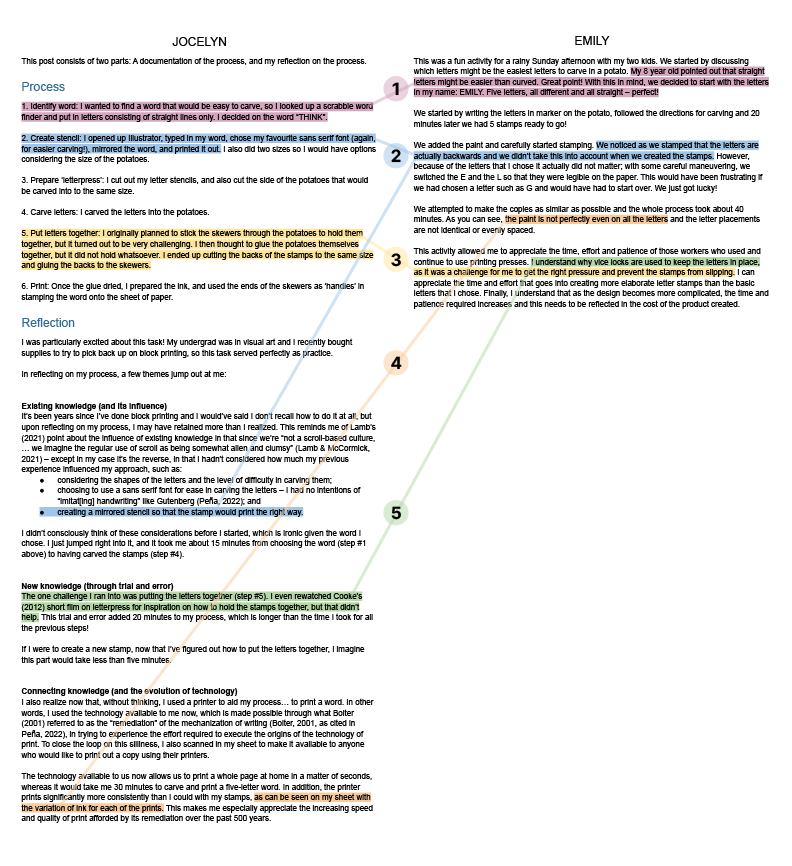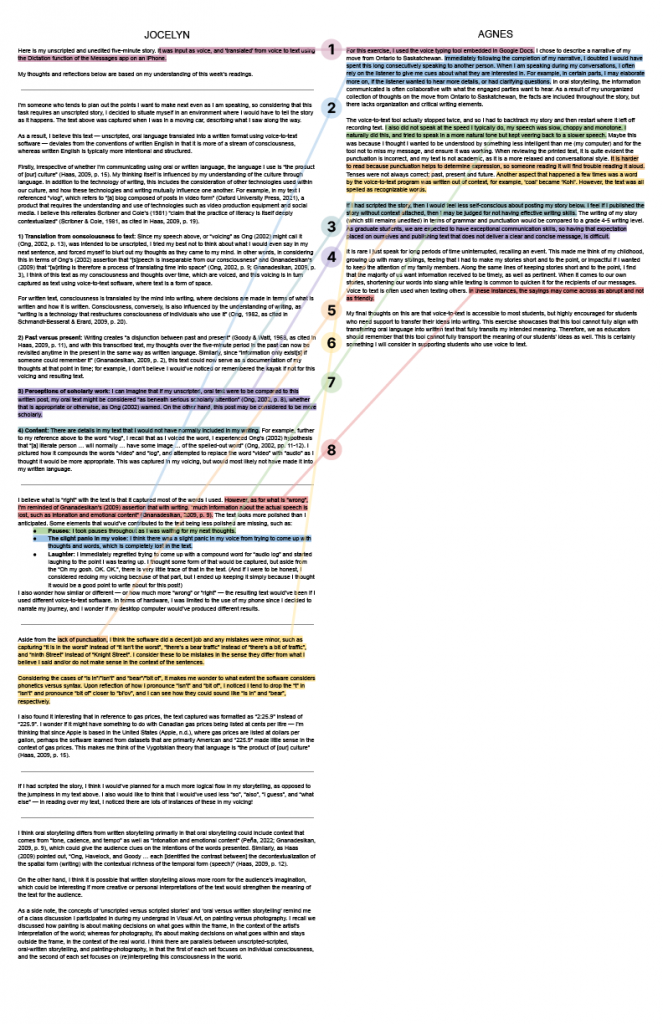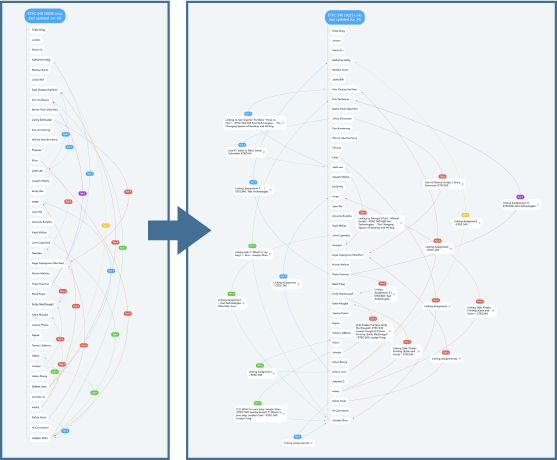Approach
My approach to this task is influenced by two resources in particular — an episode of the Stuff to blow your mind podcast from earlier in this course, and a chapter from the Jenkins et al. (2009) book from ETEC 510:
-
- In the Stuff to blow your mind episode, Lamb’s (2021) point that since we’re “not a scroll-based culture, … we imagine the regular use of scroll as being somewhat alien and clumsy” really stuck with me (Lamb & McCormick, 2021). It made me think about the influence of the capabilities of the average human being — such as the abilities to see, speak, and hear — and how they must’ve influenced how our society is structured.
- In Confronting the challenges of participatory culture: Media education for the 21st century, Jenkins et al. (2009) highlighted that “[e]ach medium has its own affordances, its own systems of representation, its own strategies for producing and organizing knowledge. Participants in the new media landscape learn to navigate these different and sometimes conflicting modes of representation and to make meaningful choices about the best ways to express their ideas in each context” (pp. 87-88).
Together with the concepts of the designs of meaning and the four factors in the The New London Group (1996) article, it got me thinking:
-
- What did I miss sharing in Task 1 by (unintentionally!) using the visual form only?
- How can I leverage the affordances of audio to redesign my first task?
- What might I learn about my own preferences and tendencies of communication through this reconsideration of the audio form?
With these in mind, I set out to — to use language from The New London Group (1996) — use my Available Design from my first task and transform it into “a new meaning-making” (p. 76), Redesigned resource.
Process
My first thought was to create a Twine game with short video clips and images, where the audience watches short videos (visual and audio design) about the items, and then are presented with a few scenarios where they choose the item(s) to use if they were me. I figured this would cover The London Group’s ideas of “all meaning-making [being] multimodal” (p. 81), “Situated Practice” (p. 85), and “Critical Framing” (p. 86). I quickly decided against this because I feel like I would still be leaning into a primarily visual form, even if it would be one that is supported by audio. I wanted to use this opportunity to explore how to flip this around — I want to create something that is primarily audio, and supported with visuals only if the visuals supplement the audio form itself. (I still think the Twine game could be interesting and would like to build that sometime!)
Thinking further about the audio form, I realized I could leverage its affordance of sound over time to redesign my first task. I recorded audio clips of the sounds that my items make, and then recorded myself describing the same themes from Task 1 but considering the audio components of the items. From there, I simply put the audio clips together.
And here’s where I thought it got interesting! After putting the clips together, I thought about how I could add visuals — but going back to my three questions from earlier, my challenge for myself was to use visuals that only supplement the audio. I decided to add captions, as well as sound waves of the sounds made by the items. The result is what you see in the video above.
Reflection
I will expand on my thoughts by answering my own questions from earlier.
What did I miss sharing in Task 1 by (unintentionally!) using the visual form only?
In my original post, I made no reference to the sounds made by my items, specifically, how they don’t make sounds when stationary, and then sound different when moved on their own compared to when they’re in use. I guess I knew this, but hadn’t given it any thought before. I thought this was particularly interesting because my items don’t change much visually — with the exception of my phone screen, but still only to a certain extent.
How can I leverage the affordances of audio to redesign my first task?
As mentioned in Process, I attempted to leverage audio’s affordance of sound over time. This is my first time exploring audio design on its own, and I imagine there is much more for me to learn about this through other resources and more exploration. It is also not lost on me that I relied on the visuals of audio editors (I used Audacity) to edit the audio, even though I set out to rely on the audio form itself for this task.
What might I learn about my own preferences and tendencies of communication through this reconsideration of the audio form?
Through this task, I realized I tend to default to visuals, and even when I leverage other modes, it is usually to supplement the visual design. I have now gained more appreciation for audio and realize there is much more for me to learn.
I also think it would be interesting for me to repeat this activity for each of the other modes. For the most part, I subconsciously compared my experience with this activity to visual design, even in this post, likely because that is what I’m most familiar with. I would like to explore each of the modes further so I can build my understanding of the ‘languages’ of the modes, be able to identify the connections across them, and make even more “meaningful choices about the best ways to express … ideas in each context” (Jenkins et al., 2009, p. 88).
References
Jenkins, H., Purushotma, R., Weigel, M., Clinton, K., & Robison, A. J. (2009). Confronting the challenges of participatory culture: Media education for the 21st century. The MIT Press. https://doi.org/10.7551/mitpress/8435.001.0001
Lamb, R., & McCormick, J. (2021, May 14). From the vault: Invention of the book, part 2 [Audio podcast episode]. In Stuff to blow your mind. https://www.iheart.com/podcast/stuff-to-blow-your-mind-21123915/episode/from-the-vault-invention-of-the-82564254/
The New London Group. (1996). A pedagogy of multiliteracies: Designing social futures. Harvard Educational Review, 66(1), 60-92. http://newarcproject.pbworks.com/f/Pedagogy%2Bof%2BMultiliteracies_New%2BLondon%2BGroup.pdf




